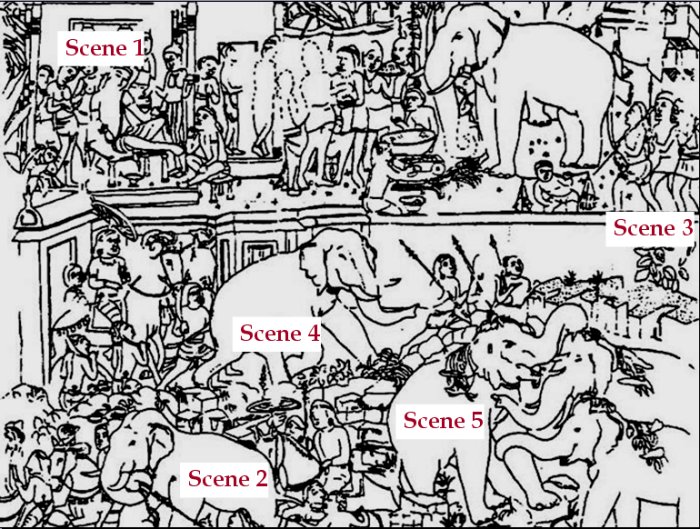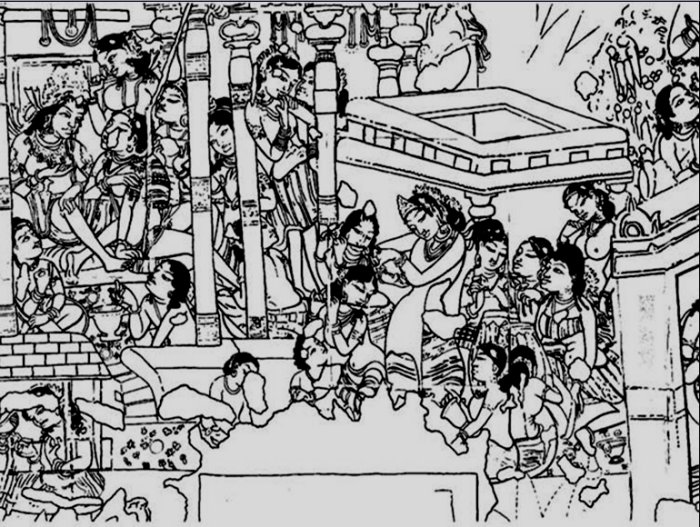PAINTINGS
AJANTA
CAVE PAINTINGS
the many-splendoured delights of Ajanta compiled by Subramanian Swaminathan
e-mail: sswami99@gmail.com
September 2007
Composition
Composition of the paintings over the period is an interesting study.
Earlier phase (2nd - 1st centuries BC)
Narration arranged in the form of long canvas at eye level, progressing from episode to episode.

The Raja with his retinue, Cave 10
Later phase (4th century AD onwards)
Later the paintings overspread the entire surface of the wall. In these
paintings narratives proceed from scene to scene and from act to act
harmoniously. The scenes are not separated into frames that might disturb the concentration of the viewing devotees.
An interesting feature of the narration, from the earlier times, is that
a strict chronology of events was not followed. In many panels scenes
are grouped according to the location of the scenes.
The composition of Matriposhaka Jataka, is typical of this period.
Matri-poshaka Jataka
Bodhisattva born as Matri-poshaka, a white elephant, lives in a forest taking care of his blind parents.
Once the elephant rescues a man, and requests him not to divulge his presence to any one.

Scene 1: The ungrateful person, who was rescued by Matri-poshaka, gives out his whereabouts to the king.
Scene 2: The captured elephant is being led to the city
Scene 3: The king supervises feeding the elephant, but the elephant
refuses to eat. Before the brooding elephant is seen food in a large
vessel and sugarcane lying about.
Scene 4: The released animal is walking majestically towards the forest
Scene 5: The happy reunion
Later phase (4th century AD onwards)
Many panels suggest that the Ajanta artists used specific conventions
for separating scenes and acts from each other using suggestive
punctuation marks.

Maha-janaka Jataka, Cave 1
A gateway may mark the end of an act. In a palace scene pillars may separate the scenes
Back
|